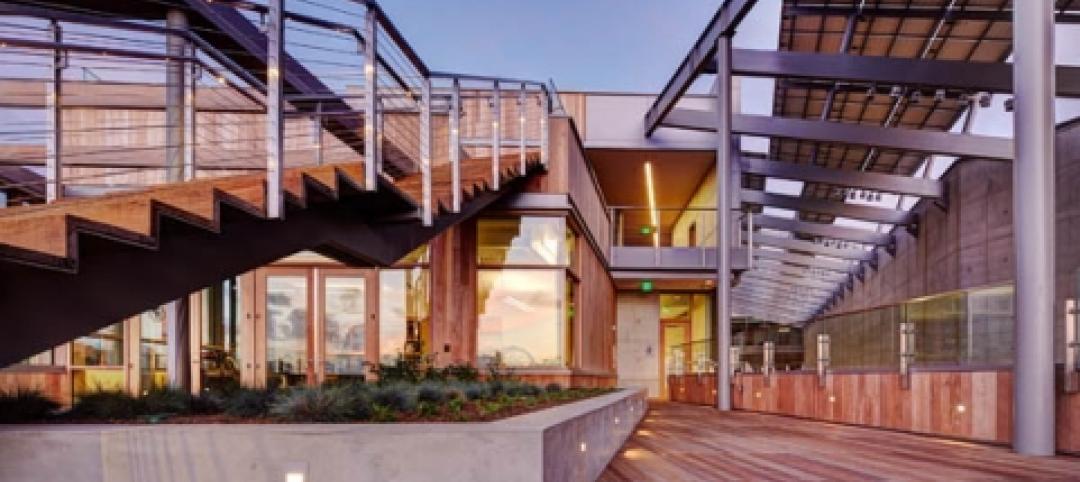There are many hurdles to overcome when completing a life cycle cost assessment. LCCAs have been praised by some and criticized or viewed with skepticism by others. Some AEC professionals like to use LCCAs to provide evidence that a certain design with a higher first cost attached to it actually achieves lower total cost of ownership over time.
Such an analysis, however, is only as good as the data that is used to complete it; in the end, you have to be able to justify and defend your results. When completing an LCCA, it is important to remain neutral and to use unbiased data.
Following are some words of advice regarding LCCAs, based on RMF Engineering’s experience on the Berkeley County School District HVAC study.
1. AVOID USING A “SIMPLE PAYBACK” METHODOLOGY. As the name implies, simple payback is a rudimentary methodology, and the results can be unsophisticated and even misleading. This method should not be used as an in-depth LCCA tool.
2. DON’T HIDE YOUR ASSUMPTIONS. The paucity of data on certain costs means that you will have to make assumptions, but these should not be allowed to affect the outcome of the analysis. It is important to thoroughly document all assumptions, costs, and calculations used in the analysis.
3. GET YOUR CONSTRUCTION DATA FROM THE BEST AVAILABLE SOURCES. Not many contractors and sales representatives are willing to divulge their actual cost for equipment, materials, and installation. Usually the best they will give you is the cost in dollars per square foot, which, unfortunately, is not sufficiently detailed to provide a proper analysis.
For HVAC life cycle cost analyses, manufacturers will often provide budget pricing for specific pieces of equipment, which can be useful. Resources such as RSMeans and published pricing guides for piping and other materials are also great resources for calculating cost and should be used instead of general cost.
4. MAKE THE EFFORT TO GET SOLID MAINTENANCE DATA. It is important to have a clear understanding of how an HVAC system will be maintained as well as how much it will cost the owner to maintain. Some owners prefer to do their own maintenance; others contract maintenance out. Some perform maintenance at regularly scheduled intervals; others wait until the equipment breaks down. Maintenance is probably the most poorly documented cost item in most LCCAs, but it can have a major impact on the accuracy and validity of the analysis. Make sure your maintenance data is up to date and specific to your project.
5. NAIL DOWN THE OWNER’S EXPERIENCE WITH EQUIPMENT LIFE. The life cycle of equipment varies by owner and can be drastically different than the manufacturer’s reported data. When comparing different types of systems, it’s important to discuss the owner’s experience with equipment life and how long they plan to use certain products. Any sharp differentiation from the norm could have a significant impact on the outcome of your analysis.
6. ANALYZE THE RESULTS CAREFULLY TO DETERMINE THE LEVEL OF CERTAINTY. For the BCSD project, the difference between the least expensive and next least expensive system was significant (13.1%), so we were comfortable in recommending it. Unfortunately, not every LCCA results in a clear winner. Each analysis will have a different level of uncertainty associated with it due to the assumptions, variables, and the analysis type. The more variables and assumptions there are, the higher the level of uncertainty. There are often intangibles that cannot be associated with a quantifiable cost, and one of these might end up becoming the deciding factor in your analysis.
7. LOOK FOR LCCA FUNDING FROM NON-CLIENT SOURCES. For the Berkeley County SD project the local utility cooperative, which happens to place a great deal of value on customer education, offered to partially fund the study in order to have access to the data. When proposing an LCCA to a client, check around to see who else could benefit from the analysis. There may be funding available to offset the cost to the owner or provide additional funding for a more in-depth study.
8. EXPECT THE UNEXPECTED. For our project, we originally modeled gas boilers for the water-source heat pump system to be similar to the four-pipe system. The energy models showed that there was virtually no requirement for heating of the condenser water loop due to our building type and climate. We suspected this might be the case because a nearby high school had been operating without a boiler and did not have heating problems. It was later decided that an electric boiler would be a better fit for the school district’s HVAC systems because its initial cost and associated annual maintenance costs would be far less than a gas boiler. It’s likely that you will face similar unanticipated results in future projects, so be prepared.
Related Stories
| Feb 26, 2014
Use this app to streamline safety inspections
Using the iAuditor app, one of our Skanska teams developed electronic reports that make safety inspections more efficient, and that make it easier to address any issues emerging from them.
| Feb 26, 2014
Startup PocketCake aims to bring virtual reality simulations to the AEC masses
Founded in 2012, the development firm offers custom virtual reality simulations for the price of a typical architectural illustration.
| Feb 26, 2014
Billie Jean King National Tennis Center serving up three-phase expansion
The project includes the construction of two new stadiums and a retractable roof over the existing Arthur Ashe Stadium.
| Feb 25, 2014
Are these really the 'world's most spectacular university buildings'? [slideshow]
Emporis lists its top 13 higher education buildings from around the world. Do you agree with the rankings?
| Feb 25, 2014
NYC's Hudson Spire would be nation's tallest tower if built
Design architect MJM + A has released an updated design scheme for the planned 1,800-foot-tall, superthin skyscraper.
| Feb 24, 2014
White Paper: Using social media to build your business
This white paper from Benjamin Moore provides practical guidance for building and sustaining an effective online presence, with the ultimate goal of helping your painting business become more successful.
| Feb 24, 2014
First look: UC San Diego opens net-zero biological research lab
The facility is intended to be "the most sustainable laboratory in the world," and incorporates natural ventilation, passive cooling, high-efficiency plumbing, and sustainably harvested wood.
| Feb 24, 2014
White Paper: The science of color and light
This white paper from Benjamin Moore provides an overview of the properties of color and light, along with practical guidance on how the relationship between the two affects design choices.
| Feb 21, 2014
Naturally ventilated hospital planned in Singapore
The Ng Teng Fong General Hospital will take advantage of the region's prevailing breezes to cool the spaces.
| Feb 21, 2014
Calatrava ordered to pay millions for 'shortcomings in his work' on conference center project
Famed architect Santiago Calatrava must pay 2.9 million euros due to faulty design work on the Palacio de Congresos project in Oviedo, Spain.
















